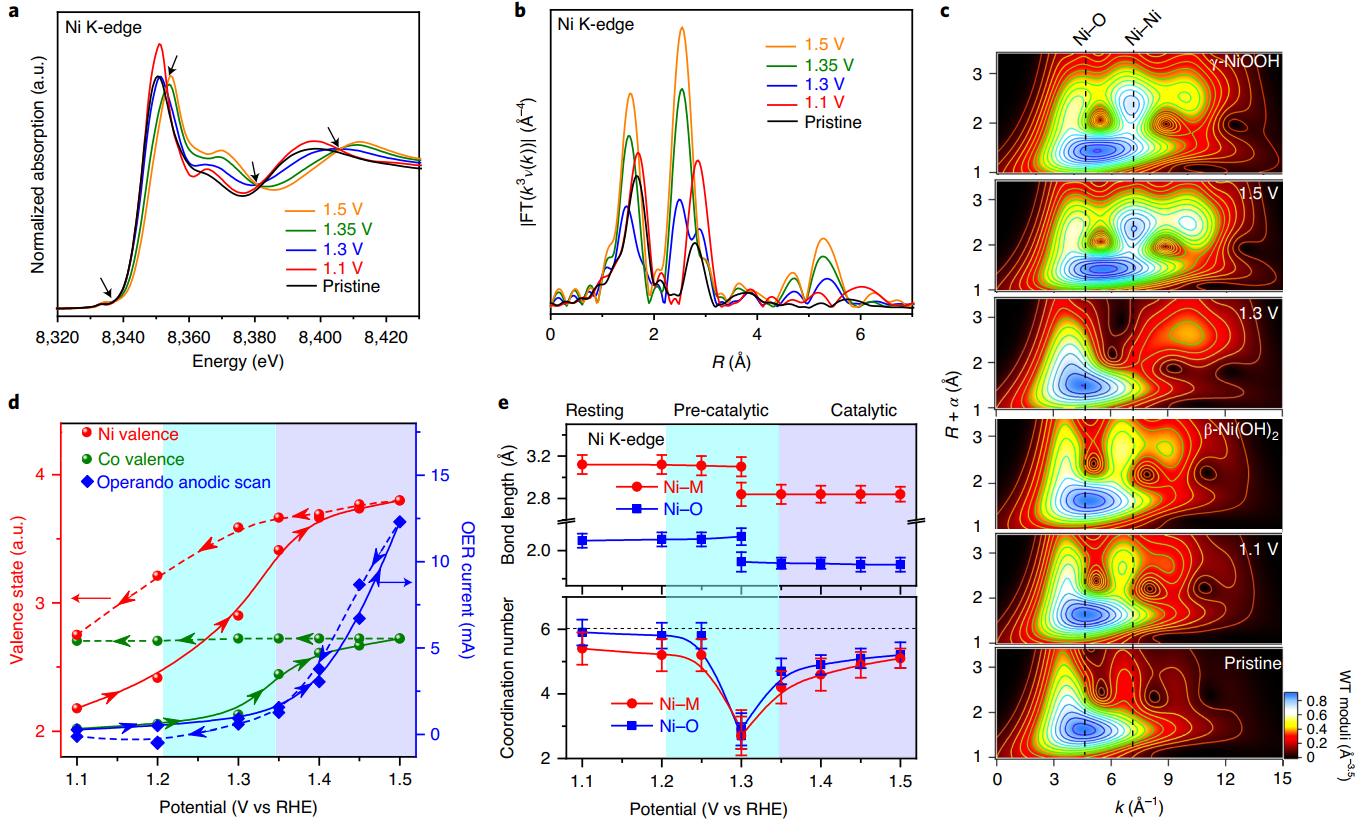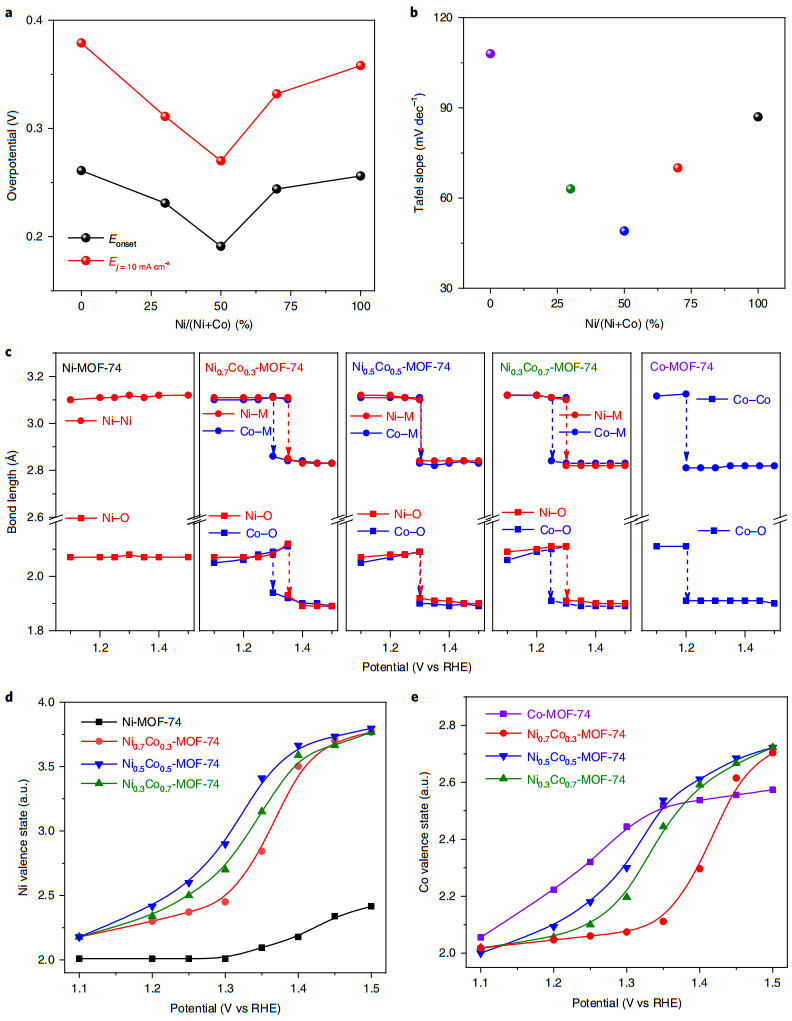Scientists reveal structural transformation of highly active metal–organic framework electrocatalysts during the oxygen evolution reaction
Associate Prof. DONG Juncai from the Institute of High Energy Physics, Chinese Academy of Sciences, and his collaborators recently unveiled a two-step structural reconstruction for nanoscale metal–organic framework (MOF) catalysts during the electrocatalytic oxygen evolution reaction (OER) process as well as the regulation rules for the process. These findings offer not only details on the correlation between structural evolution and OER catalytic activity, but also a perspective on developing composite catalysts. The study, entitled "Structural transformation of highly active metal–organic framework electrocatalysts during the oxygen evolution reaction," was recently published in Nature Energy.
Electrocatalystic OER plays a key role in the energy conversion technologies. MOFs, which are constructed by coordination between organic ligands and metal ions/clusters, are increasingly being investigated as electrocatalysts for OER. This is due to the many inherent advantages of MOFs for both mechanism studies and performance optimization, such as the periodic arrangement, the large surface area, the high porosity and the abundantly accessible sites for the catalytic process. So far, despite their promising catalytic activity, many fundamental questions concerning their structure-performance relationships—especially those regarding the roles of active species—remain to be answered.
In this study, operando X-ray absorption spectroscopy and high-resolution transmission electron microscopy imaging were employed to investigate the structural reconstruction of nanoscale MOF catalysts during the OER process. Bimetallic NiCo-MOF-74 nanocrystals were selected as prototypical catalysts because of their high OER activity and defined structure. A two-phase structural transition was observed at metal nodes, with Ni0.5Co0.5(OH)2 and Ni0.5Co0.5OOH0.75 forming under relatively low and high applied potentials, respectively, and the in situ-formed Ni0.5Co0.5OOH0.75/MOF-74 with abundant oxygen vacancies and high oxidation states was found to be responsible for the high OER activity. It was also found that the ratio between Ni and Co in NiCo-MOF-74 can regulate this two-phase structural transition by tuning the phase transition potential of Ni–O and Co–O moieties, thereby leading to optimization of the catalytic activity. This work offers deep insights into both the understanding of the fundamental processes of the structural transformation during the OER process and the design of highly active OER electrocatalysts.
This project was supported by the Youth Innovation Promotion Association of CAS, the National Natural Science Foundation of China, the Strategic Priority Research Program of the Chinese Academy of Sciences and the National Key Basic Research Program of China, among others.


Contact Information
Mr. GUO Lijun
ljguo@ihep.ac.cn